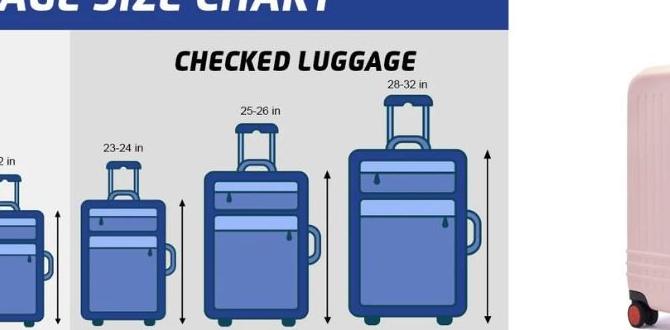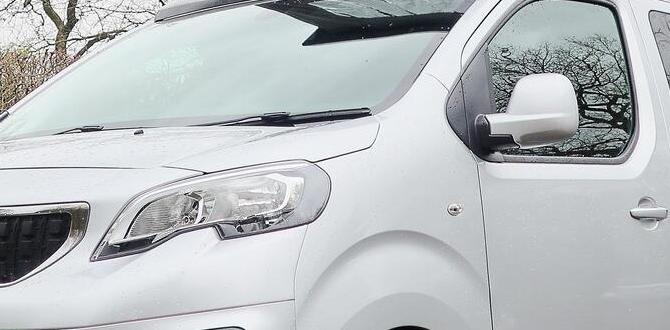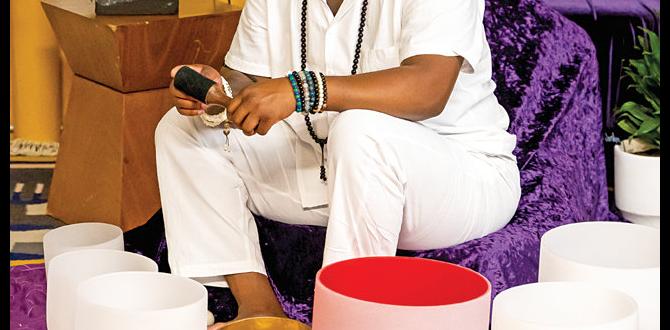Adult diapers for incontinence management provide reliable protection and discretion, allowing individuals to maintain their independence and enjoy life without worry. Choosing the right product involves understanding absorbency, fit, and comfort to ensure confidence and dryness throughout the day and night.
Experiencing incontinence can feel isolating, but you’re not alone. Many people navigate this common concern, and thankfully, adult diapers offer a practical and effective solution. Managing incontinence doesn’t mean compromising your lifestyle, especially when traveling. With the right knowledge and products, you can achieve comfort, security, and peace of mind. This guide will walk you through everything you need to know to confidently manage incontinence with adult diapers, ensuring your journeys, big or small, are as smooth and enjoyable as possible.
Understanding Adult Diapers for Incontinence Management
Adult diapers, also known as incontinence briefs or protective underwear, are designed to absorb and contain urine or fecal leakage. They are a crucial tool for individuals experiencing various degrees of incontinence, helping them maintain dignity, hygiene, and an active lifestyle. Unlike disposable products from the past, modern adult diapers are discreet, comfortable, and highly effective, offering a range of absorbency levels to suit individual needs.
The primary goal of using adult diapers for incontinence management is to prevent leaks and skin irritation, allowing users to go about their daily activities without fear of accidents. This can significantly improve quality of life, boost confidence, and enable continued participation in social events, work, and travel.
Why Are Adult Diapers Necessary?
Incontinence can stem from various factors, including age, medical conditions, childbirth, surgery, or neurological issues. For many, it’s a temporary condition, while for others, it’s a long-term challenge. Regardless of the cause, incontinence can:
- Lead to skin breakdown and infections if not managed properly.
- Cause significant emotional distress, anxiety, and social withdrawal.
- Impact sleep quality due to frequent awakenings necessitated by leaks.
- Significantly affect personal relationships and professional life.
Adult diapers provide a vital layer of protection, absorbing leaks and keeping the skin dry. This helps prevent moisture-related skin issues and offers the user a sense of security, allowing them to focus on living their life rather than worrying about potential accidents.
Types of Adult Diapers
The market offers a variety of adult diaper styles, each suited for different needs and preferences. Understanding these differences is key to finding the best fit for comfortable and effective incontinence management.
1. Briefs (Adult Diapers with Tabs)
These are the most traditional form of adult diaper, featuring refastenable tabs on the sides. They offer a high level of absorbency and are often recommended for moderate to heavy incontinence, as well as for individuals with limited mobility who may need assistance with changes.
- Pros: Excellent absorbency, adjustable fit, good for overnight use, easy for caregivers to change.
- Cons: Can be bulkier, tabs may become less sticky with repeated adjustments, might be perceived as less discreet than underwear styles.
2. Protective Underwear (Pull-up Style)
Designed to look and feel like regular underwear, these pull-on garments are discreet and easy to wear for individuals who are mobile and can manage self-care. They are suitable for light to moderate incontinence.
- Pros: Discreet under clothing, comfortable, easy to put on and take off like regular underwear, promotes independence.
- Cons: May offer less absorbency for heavy leaks compared to briefs, can be trickier to change if soiled without fully removing pants.
3. Belted Undergarments
These consist of an absorbent pad held in place by a reusable elastic belt. They offer a good balance of absorbency and ease of use, often preferred for moderate incontinence and for those who find tabbed briefs or pull-ups less convenient.
- Pros: Easier to change than pull-ups if soiled, more breathable than some briefs, good for moderate to heavy incontinence.
- Cons: Belt may be visible under some clothing, fit can be less secure for some users.
4. Pads and Liners
These are worn inside regular underwear and are suitable for very light or occasional leakage (dribbles). They range from small liners to larger pads that can be secured with adhesive strips.
- Pros: Very discreet, cost-effective for light incontinence, easy to carry and change.
- Cons: Not suitable for moderate to heavy incontinence, risk of shifting or leakage if not positioned correctly.
Key Features to Consider
When selecting adult diapers for incontinence management, several features are crucial for comfort, efficacy, and discretion:
- Absorbency Level: Diapers are rated for light, moderate, heavy, or overnight use. Choose based on the severity and type of incontinence.
- Fit and Size: A proper fit is paramount to prevent leaks and ensure comfort. Measure your waist and hips and consult sizing charts. Brands can vary in fit.
- Material: Look for breathable materials that are soft against the skin to prevent irritation. Some products feature a cloth-like backing for a more fabric-like feel.
- Odor Control: Many modern diapers incorporate technologies to neutralize odors, offering an added layer of confidence.
- Leak Guards: Inner leg cuffs that help prevent leaks by creating a barrier.
- Wetness Indicator: A line or pattern that changes color when the product is wet, signaling the need for a change.
Choosing the Right Adult Diaper: A Step-by-Step Guide
Selecting the ideal adult diaper can feel overwhelming with so many options. Follow these steps to make an informed decision that ensures your comfort and protection.
Step 1: Assess Your Needs
The first and most crucial step is understanding the nature and severity of your incontinence. Are you dealing with occasional dribbles, moderate leaks during physical activity, or complete bladder/bowel control loss?
- Frequency: How often do accidents occur?
- Volume: How much leakage are you experiencing?
- Type: Is it primarily urine, stool, or both?
- Time of Day: Do you experience leaks more at night, during activity, or all the time?
Information gathered here will guide your choice of absorbency level and product type.
Step 2: Determine Product Type
Based on your assessment and personal preferences, select the product type that best suits your lifestyle and mobility.
- For active individuals with light to moderate needs: Protective underwear (pull-ups) often provide the best blend of discretion and ease of use.
- For moderate to heavy incontinence, or those with limited mobility: Briefs with tabs offer superior containment and a customizable fit.
- For very light leaks: Pads or liners inside regular underwear may be sufficient.
Step 3: Measure for the Correct Size
A proper fit is essential for preventing leaks and discomfort. Most manufacturers provide detailed sizing charts. Typically, you’ll need to measure:
- Waist: Measure around your natural waistline.
- Hips: Measure around the fullest part of your hips.
Ensure the product fits snugly but not too tightly. Look for brands that offer a range of sizes and consider trying samples if available.
Step 4: Evaluate Absorbency and Features
Refer to product packaging for absorbency ratings (often indicated by a numerical system or terms like “maximum,” “overnight,” “heavy,” “moderate,” and “light”).
Consider essential features:
- Breathability: Crucial for skin health. Look for “breathable” or “cloth-like” materials.
- Odor control: A must for confidence.
- Leak guards: Essential for preventing side leaks.
- Wetness indicator: Helpful for knowing when to change.
Step 5: Consider Material and Comfort
The material of the diaper directly impacts skin health and comfort. Hypoallergenic and latex-free options are available for sensitive skin. A soft, cloth-like outer layer often feels more pleasant and is quieter under clothing than plastic-backed products. For detailed information on skin care related to incontinence, the National Institute of Diabetes and Digestive and Kidney Diseases (NIDDK) provides valuable insights.
Step 6: Trial and Error
It’s common to try a few different brands and styles before finding your perfect match. What works for one person may not work for another due to differences in body shape, leakage patterns, and personal preferences. Purchase smaller quantities initially to test their performance.
Product Comparison: Briefs vs. Protective Underwear
To help illustrate the differences, here’s a comparison table highlighting the key aspects of briefs and protective underwear, two of the most common types of adult diapers for incontinence management.
| Feature | Briefs (with Tabs) | Protective Underwear (Pull-Up Style) |
|---|---|---|
| Best For | Moderate to heavy incontinence, overnight protection, individuals with limited mobility or requiring assistance. | Light to moderate incontinence, active individuals, those who prefer discretion and independence. |
| Ease of Use | Requires fastening tabs; easier for caregivers to change; can be changed while lying down. | Pulled on and off like regular underwear; easier for self-changing if mobile. |
| Fit & Security | Adjustable fit via tabs; can be secured tightly for reliable containment. | Elastic waistband; fit is more fixed once put on; can be less secure for very heavy leakage. |
| Discretion | Can be bulkier and make noise; tabs can be felt under clothing. | Designed to look and feel like regular underwear; generally more discreet. |
| Absorbency | Typically offers higher absorbency levels, including overnight options. | Generally offers moderate to heavy absorbency, but often less than top-tier briefs. |
| Cost | Can vary, but high-absorbency briefs might be more expensive per unit. | Can be cost-effective for moderate needs; bulk purchasing often offers savings. |
Tips for Using Adult Diapers Effectively
Beyond choosing the right product, proper usage is key to maximizing comfort, preventing leaks, and maintaining skin health. Here are some essential tips:
1. Proper Technique for Changing
For Tabbed Briefs:
- Gently unfold the brief and identify the front (usually has the wetness indicator).
- Position the brief under your body, ensuring the back panel is centered.
- Pull the front panel up between your legs.
- Bring the side panels around and fasten the tabs securely, starting from the bottom and moving up. Ensure a snug but comfortable fit.
- Check for any gaps around the legs and adjust as needed.
For Protective Underwear:
- Step into the underwear and pull it up like regular briefs.
- Adjust the leg cuffs and waistband for a comfortable fit.
- To remove, either pull them down or, if soiled, tear along the side seams.
2. Skin Care is Crucial
Keeping the skin clean and dry is vital to prevent irritation, rashes, and infections. Incontinence-associated dermatitis (IAD) is a common concern when skin is frequently exposed to moisture.
- Cleanse Gently: Use mild, pH-balanced cleansers specifically designed for incontinence care or sensitive skin. Avoid harsh soaps and excessive rubbing.
- Pat Dry: Gently pat the skin dry with a soft towel or disposable wipes.
- Use Barrier Creams: Apply a thin layer of a skin barrier cream (containing ingredients like zinc oxide or dimethicone) to protect the skin from moisture and irritants. These create a protective shield.
- Change Promptly: Change soiled diapers as soon as possible to minimize skin exposure to urine and feces.
For more in-depth information on managing skin health related to incontinence, resources from organizations like the Wound, Ostomy and Continence Nurses Society (WOCN) can be incredibly helpful.
3. Managing Odors
Modern adult diapers are designed with odor control technology, but some additional measures can enhance discretion:
- Choose products advertised with advanced odor-neutralizing features.
- Ensure a snug fit to contain leaks and odors effectively.
- Dispose of used diapers promptly and securely in a sealed bag.
- Consider using discreet disposal bags designed for incontinence products.
4. Hydration and Diet
While it might seem counterintuitive, staying hydrated is important, even with incontinence. Dehydration can lead to concentrated urine, which can irritate the bladder and skin. However, timing fluid intake can be beneficial. Reducing fluid intake an hour or two before bedtime can help minimize nighttime leaks. Certain foods and beverages (like caffeine, alcohol, and acidic foods) can also irritate the bladder; monitoring your diet can help identify triggers.
5. When to Seek Medical Advice
Adult diapers are a management tool, not a cure. If you experience sudden changes in your incontinence, pain, discomfort, skin issues that don’t improve, or if your incontinence significantly impacts your quality of life, consult a healthcare professional. They can help diagnose the underlying cause and recommend appropriate treatments, which may include behavioral therapies, medications, or other medical interventions. Resources like the Urology Care Foundation offer patient-friendly information about urinary incontinence.
Adult Diapers and Travel: Maintaining Confidence on the Go
For travelers, managing incontinence can add an extra layer of complexity to trip planning. However, with the right preparation, adult diapers can make travel stress-free and enjoyable.
Packing Essentials for Travel
When packing, always bring more supplies than you anticipate needing. It’s better to have extra than to run out while traveling.
- Sufficient Diapers: Pack enough for each day of your trip, plus a few extra days’ supply.
- Disposal Bags: Small, leak-proof bags for discreet disposal of used products.
- Wipes: Unscented, sensitive skin wipes for cleaning on the go.
- Hand Sanitizer: For hygiene when soap and water aren’t available.
- Barrier Cream: A travel-sized tube for skin protection.
- Change of Clothes: Always keep a spare set of clothes in your carry-on bag.
Tips for Traveling with Adult Diapers
- On Airplanes: Inform flight attendants if you require assistance with changes. Many larger aircraft have accessible lavatories that can accommodate changes. Keep essential supplies in your carry-on.
- Road Trips: Plan for frequent stops to change and freshen up. Utilize rest stops and be prepared to manage changes in your vehicle if necessary.
- Hotels and Accommodations: Most hotel restrooms are adequate for changes. If you have specific needs, contacting the hotel in advance can be helpful.
- Discretion: Choose underwear-style products for better discreteness under travel attire. Store used products in sealed bags before disposing of them in designated receptacles.
- Security and Baggage: Pack diapers in your checked luggage or carry-on. If carrying a large supply in your carry-on, consider including a doctor’s note stating they are for medical use, though this is rarely necessary for personal supplies.
Remember, the goal is to remain comfortable and confident. Many individuals travel successfully with incontinence by incorporating these simple strategies.
Frequently Asked Questions (FAQs)
Q1: How do I know if I need adult diapers?
If you experience accidental leakage of urine or stool that causes distress, discomfort, or impacts your daily activities and confidence, it’s a strong indicator that you could benefit from adult diapers or other incontinence management products.
Q2: Are adult diapers noticeable under clothing?
Modern adult diapers are designed for discretion. Protective underwear styles are particularly discreet and resemble regular underwear. Briefs with tabs can be slightly bulkier but are often manageable under looser clothing.
Q3: How often should I change an adult diaper?
You should change an adult diaper whenever it becomes wet or soiled. For hygiene and skin protection, it’s best to change it promptly after each void








